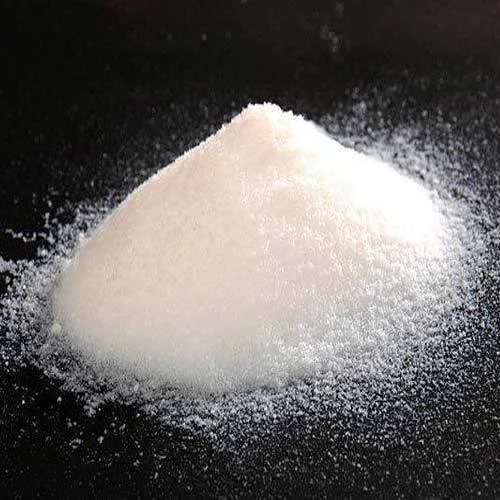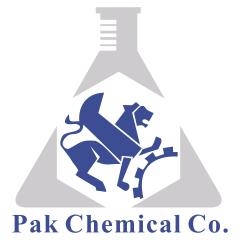Fumed silica, also known as pyrogenic silica, is one of the most widely used industrial materials due to its unique properties. With a nanometric structure and exceptional mechanical, chemical, and physical characteristics, it plays a crucial role in manufacturing advanced products and enhancing their performance. This article provides a comprehensive review of its applications, properties, challenges, and advantages.
Unique Characteristics
This material is produced through the hydrolysis of silicon tetrachloride (SiCl₄) in a flame, resulting in ultra-fine particles with a high surface area and remarkable properties. The key features include:
- High Surface Area: Enables superior performance in applications requiring surface adsorption or rheology modification.
- Thermal Stability: Maintains its properties even at extremely high temperatures.
- Anti-Caking Properties: Prevents particle aggregation in powdered materials.
- Chemical Resistance: Non-reactive to acids, alkalis, and other chemicals.
- Lightweight: Low density makes it ideal for weight-sensitive applications.
Industrial Applications
Fumed silica is utilized across various industries, including paints and coatings, rubber and plastics, cosmetics, pharmaceuticals, food, resins, oil and gas, electronics, and thermal insulation. Below are some detailed applications in different sectors.
Paints and Coatings
This industry is one of the largest consumers of this material due to the following benefits:
- Thickening and Stabilization: Helps control viscosity and prevents paint from sagging.
- Enhanced Abrasion Resistance: Improves scratch and impact resistance.
- Prevention of Pigment Sedimentation: Keeps pigments and solids evenly distributed in both water- and oil-based paints.
- Matte Finishes: Provides a professional matte texture.
Example: Automotive paints incorporate it for durability and UV resistance.
Rubber and Plastics
In the rubber and plastic industries, it contributes to:
- Structural Reinforcement: Enhances tensile strength and tear resistance in industrial and automotive rubbers.
- Improved Mechanical Properties: Increases flexibility and stability under harsh conditions.
- Silicone Elastomers: Acts as a reinforcing filler in high-performance silicones.
Example: Heavy-duty tires use it to reduce rolling resistance, improving fuel efficiency.
Cosmetics and Personal Care
In cosmetics, its role is significant in improving product quality:
- Matte Effect: Reduces skin shine in sunscreens and powders.
- Anti-Caking Agent: Prevents clumping in compressed powders and creams.
- Enhanced Stability: Prevents separation in emulsions like lotions.
Example: Sunscreens use it to achieve a lightweight texture and better absorption.
Pharmaceutical Industry
In pharmaceuticals, it plays a key role in formulation:
- Flowability Improvement: Aids in smooth powder movement during tablet and capsule production.
- Anti-Adhesion Properties: Prevents material from sticking to manufacturing equipment.
- Moisture Absorption: Enhances stability of active ingredients.
Example: Dietary supplements use it to ensure uniform distribution and prevent caking.
Food Industry
As a food-grade additive, it serves multiple functions:
- Anti-Caking Agent: Prevents clumping in salt, flour, and sugar.
- Flow Enhancer: Ensures smooth distribution of powdered products.
- Extended Shelf Life: Helps maintain product integrity over time.
Example: Instant coffee formulations use it to prevent powder adhesion.
Resins and Composites
In resin-based applications, it enhances:
- Shrinkage Reduction: Prevents cracking during resin curing.
- Structural Strength: Improves mechanical durability of composites.
- Thermal Stability: Increases heat resistance.
Example: Aerospace-grade resins incorporate it for lightweight yet durable structures.
Oil and Gas Industry
In petroleum extraction and refining, it is valuable for:
- Viscosity Control in Drilling Fluids: Prevents sedimentation of solid particles.
- Strength Enhancement in Well Cementing: Increases cement resistance under high temperatures.
Example: Offshore drilling operations use it to reduce cement weight and enhance performance.
Thermal Insulation
Due to its low thermal conductivity, it is widely used in insulation materials:
- Advanced Insulators: Essential for lightweight, high-performance insulation in aerospace and construction.
- High-Temperature Resistance: Offers superior performance in extreme heat applications.
Example: Spacecraft components utilize it for thermal protection.
Electronics Industry
Fumed silica plays a crucial role in electronics by:
- Circuit Protection: Used in coatings and resins to reduce moisture penetration.
- Enhanced Component Durability: Improves longevity of electronic parts.
Example: Printed circuit boards use it to manage thermal stress.
Challenges and Limitations
Despite its extensive applications, there are some challenges in using this material:
- High Production Cost: Manufacturing requires advanced technology, making it expensive.
- Environmental Concerns: Production emits gases that may have negative ecological effects.
- Health Risks: Inhalation of fine particles can cause respiratory issues.
Conclusion
Fumed silica is an exceptional material with vast industrial applications, enhancing quality, durability, and efficiency. Despite challenges, its superior properties ensure its continued importance in various industries. Ongoing research and development efforts will likely address current limitations and expand its usage in emerging technologies.
Discover the diverse applications of fumed silica across industries, including coatings, plastics, cosmetics, pharmaceuticals, and more, with its unique properties enhancing performance and efficiency. Applications of Fumed Silica span across coatings, plastics, cosmetics, pharmaceuticals, and more, enhancing performance with its unique stability, reinforcement, and anti-caking properties.

